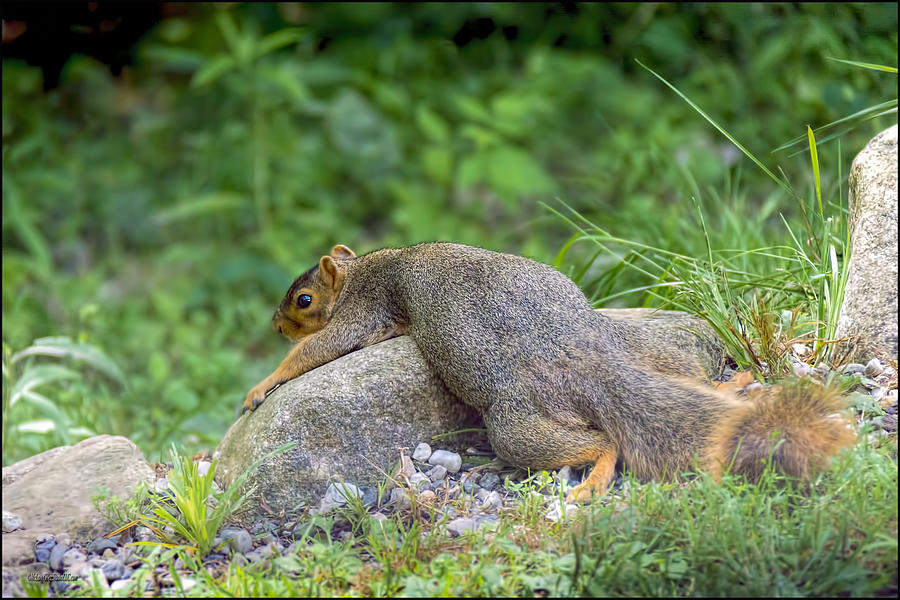Squirrels are one of many types of animals that may seek shelter in your home and require wildlife control in Okanagan to remove. They are energetic creatures whose behaviour is difficult for humans to understand. For example, you may come across a squirrel lying flat on its stomach on the ground, a tree branch, or an outdoor railing. Sometimes the squirrel will quickly assume this position at your approach. Also known as “splooting,” this is normal behaviour for squirrels and does not indicate that they are unhealthy. There are several different reasons why they do it.
1. Resting
When you find a squirrel lying flat on a tree branch or other raised area, it may look like it is taking a nap. Chances are, that is exactly what it is doing. Tree squirrels spend a great deal of their time elevated high above the ground. This allows them to find food and offers them some protection from predators. Nevertheless, it does pose a danger of falling out of the tree. Squirrels are very nimble when awake, and if they do fall, they are usually able to catch themselves before hitting the ground. However, if they were to fall out of a tree while asleep, they would be susceptible to injury just as any other animal would. Pressing their bodies flat against the branch helps to decrease the chances of the squirrels falling out of the tree while they sleep.
2. Heat Dumping
If you see a squirrel lying flat against a surface on a hot day, it may be trying to cool off by using heat dumping. Compared to the fur on the outer body, a squirrel’s fur is much thinner on its belly. There are also blood vessels here that are close to the surface of the skin. When a squirrel gets too hot, it may lie on a surface that is cooler than the surrounding air. This may be a shaded rock or a patch of pavement, a tree limb, or the ground. By stretching itself out so it lies flat, it exposes as much of its body surface to the cooler material as possible. According to the laws of thermodynamics, heat transfers from the blood as it passes through the superficial blood vessels to the cooler surface until the two reach a mean temperature. As a result, the surface becomes warmer and the squirrel’s body becomes cooler, which is why this process is known as heat dumping.
3. Defending Themselves
Squirrels are very small creatures that have little in the way of defences, especially against predators that are much larger than they are. They have claws and teeth with which to bite and scratch, but while these defences may be effective against another squirrel, they are unlikely to do much to deter a bobcat or a coyote. However, that’s not to say that squirrels are completely defenceless. Because of their coloration, they can blend in fairly well against the bark of a tree, so much so that a hungry predator might not notice them. Therefore, squirrels may lie flat against a tree branch to improve their camouflage by hiding their underbellies, which are often lighter coloured than the fur on their backs.
If the squirrel does get attacked, lying flat on their stomachs and presenting their backs to their enemies helps to protect their vital organs. These would be more vulnerable to injury if the predator got a hold of a squirrel by its belly. A squirrel may still not have much chance if a predator comes after them, but the ability to protect its vital organs helps to increase its chance of survival.
Humane Wildlife Control in Okanagan From Skedaddle
Our squirrel removal methods involve the safe removal of animals allowing them to immediately return back to their natural environment, then cleaning where they have been, and preventing them from coming back. Find out more about how we can help you cope with a wildlife situation in the Okanagan Valley.



